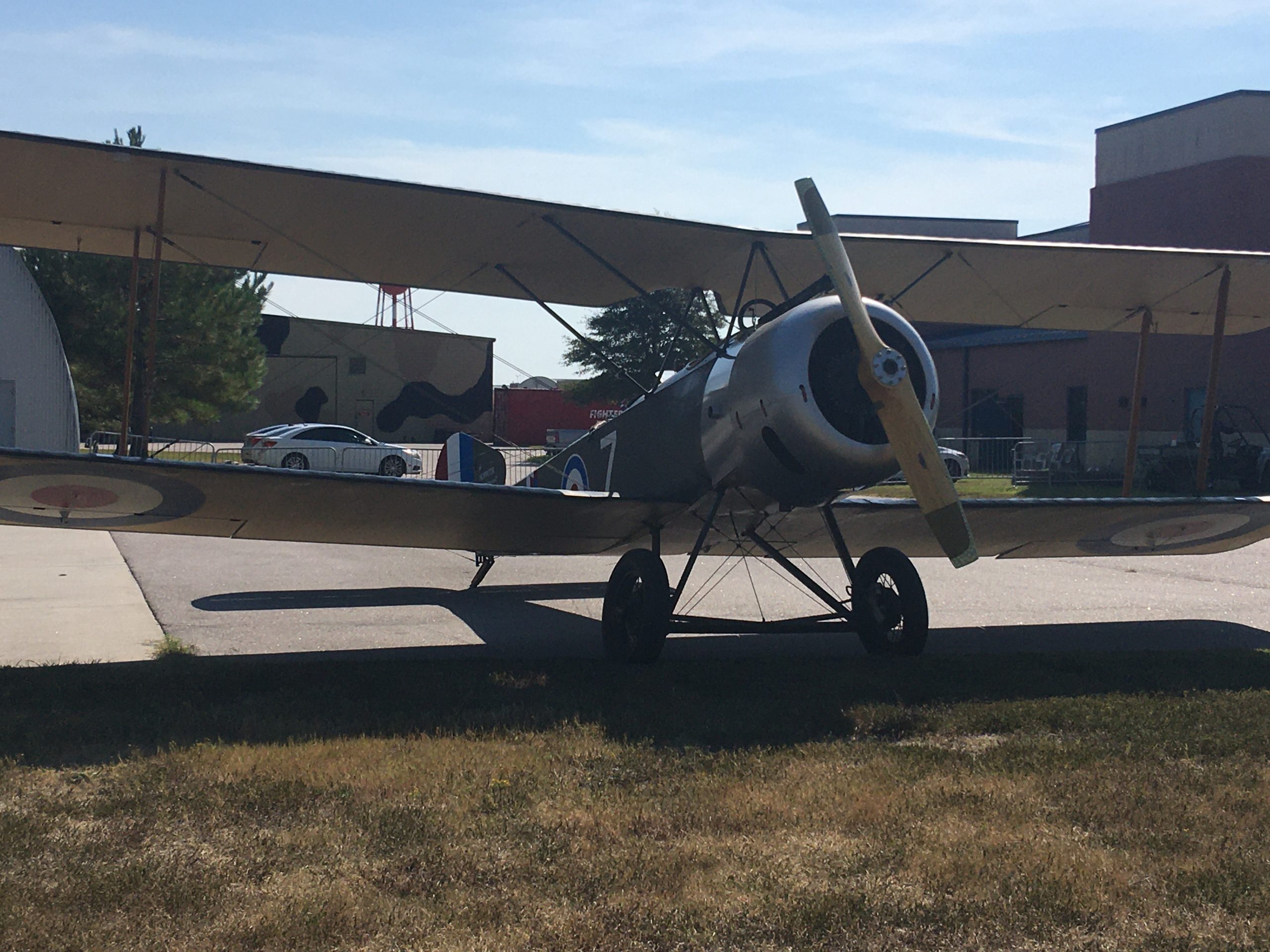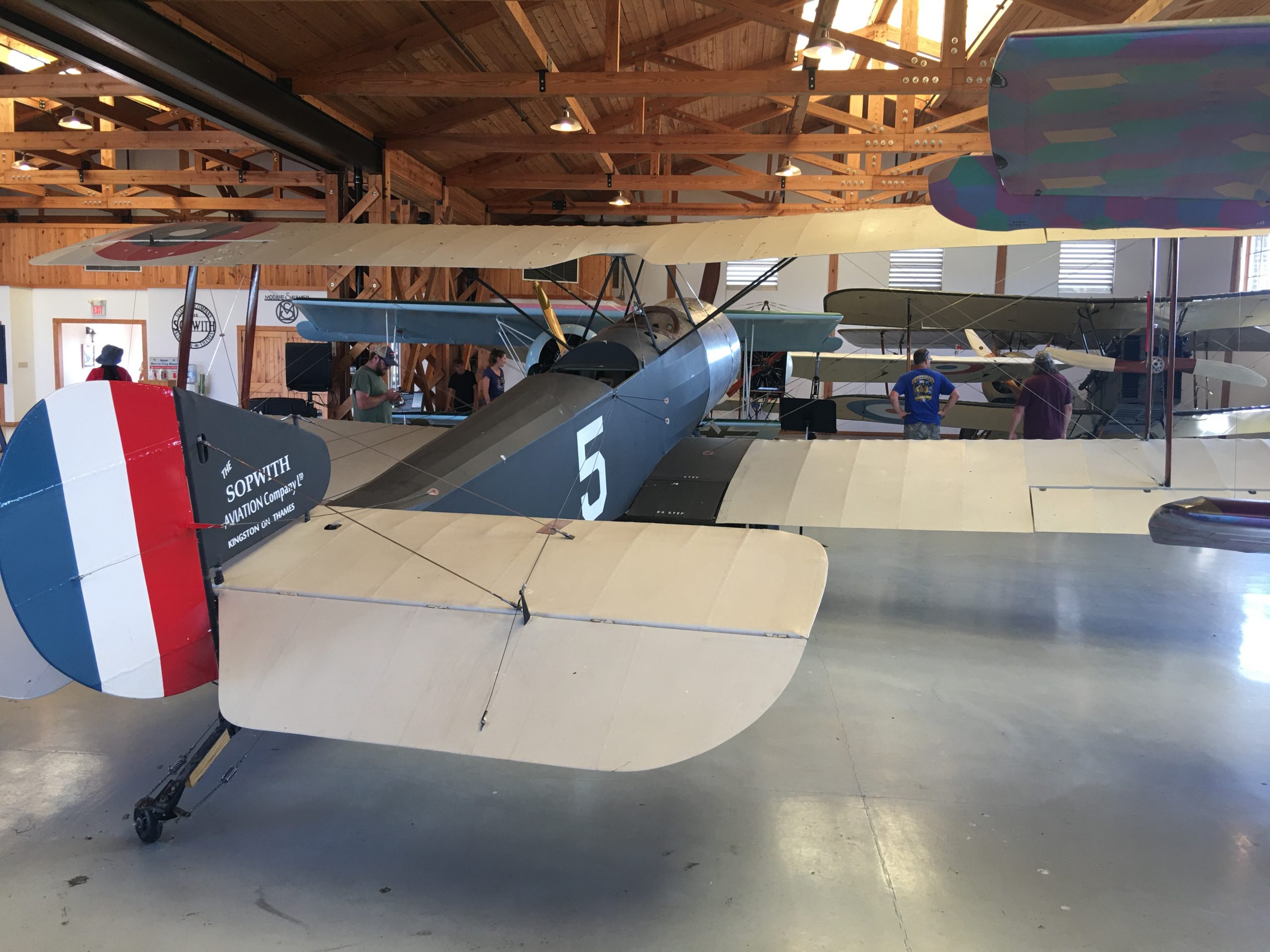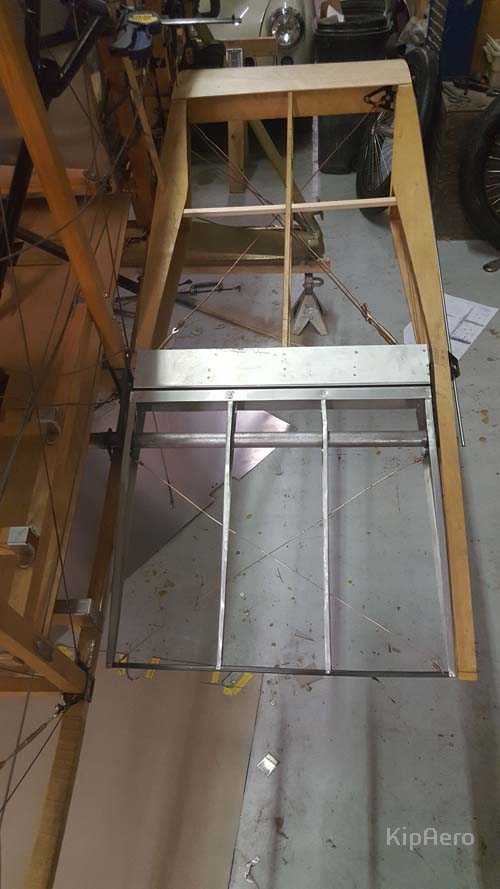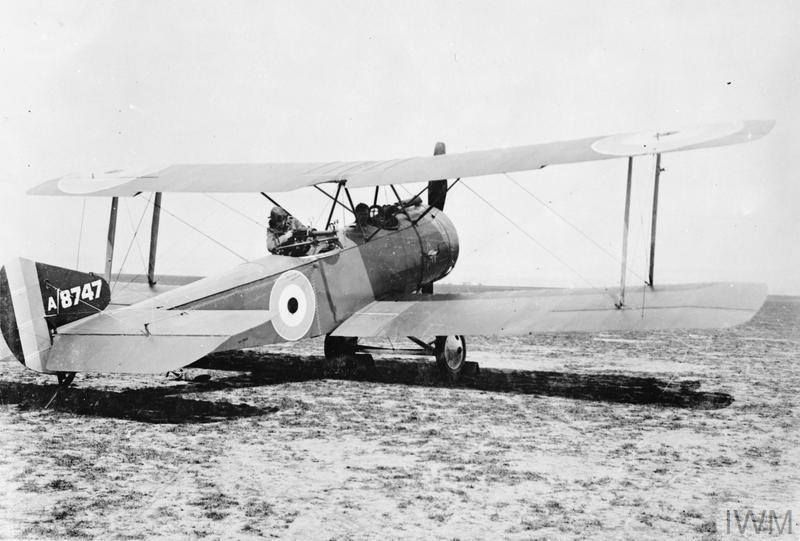In early October I spent the weekend in Virginia Beach at the “Warbirds Over the Beach” airshow. This third post on the air show includes some more of the pictures I took, and a few other more “professional” pictures.
This is a flying model of the Sopwith 1 1/2 Strutter. I have already posted this picture. The Sopwith 1 1/2 stutter did its first flight in December 1915 and was introduced to combat in April 1916. It was the first British aircraft to enter service with a forward firing synchronized machine gun that fired through the propeller. It was also the first airplane to have air brakes (the Wikipedia article on air brakes only started discussing their history in 1931). It had a 130 horsepower French built Clerget 9B 9-cylinder air-cooled rotary piston engine. I gather 1,280 were built in England and 4,500 were license-built in France by 11 different companies.

This picture below taken by a friend of the same plane at the same time. Not sure why his picture looks brighter and better than mine. We were both using Apple I-phones. But then, I am really not that patient enough to be a good photographer.

They also had one in the museum

This is the observers compartment. Note the control stick. I gather this is a field improvisation, but was done during the Great War.

This is link is worth looking at, showing how one is constructed, fully documented in pictures: https://www.kipaero.com/aero-documentation/sopwith-construction/
This is their picture of the air brake:

A useful discussion of Sopwith 1 1/2 Strutter airbrakes: http://www.theaerodrome.com/forum/archive/index.php/t-33348.html
And here is a picture of the plane during the Great War. Note the machinegun mount.


What is the purpose of the control stick in the observer’s compartment? Could the observer take over as pilot if required, e.g. if the pilot was killed?
Don’t know for certain, but I assume so. It could have also been used by the observer when doing observations. Apparently it was a field modification that was sometimes done. I don’t know if there was some type of override mechanism tied to one of the sticks, but I assume not.
There is reason I took the picture though. Perhaps a Sopwith 1 1/2 Strutter expert is following this blog.
“Not sure why his picture looks brighter and better than mine. We were both using Apple I-phones. But then, I am really not that patient enough to be a good photographer.”
Chris, I suspect that he had a better angle (akin to that affectation of “deflection” in the rules for Richthofen’s War : – ) relative to the sun whereas your angle had much more of the plane’s visible surface shaded from the sun. He had a better angle for a camera shot while you had a better angle for a machinegun shot (and for a collision ) – :